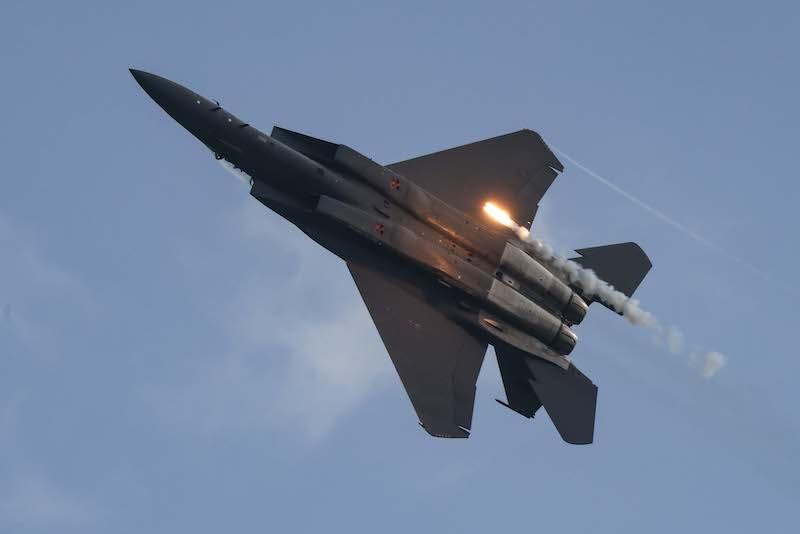
An F-15SG performs in the Singapore Airshow flying display.
A Boeing F-15EX can reach nearly Mach 3 in controlled flight in a “clean” configuration, meaning no external pylons, munitions or sensors, Boeing’s program manager said Feb. 21 at the Singapore Airshow.
“Yeah, it’s fast,” said Boeing’s Rob Novotny, a former U.S. Air Force F-15 test pilot.
Specifically, the not-to-exceed speed of the twin-engined fighter is about Mach 2.9, or about 2,225 mph at sea level, Novotny said. That puts the top speed of the Eagle II within about 80 mph of Mach 3, a speed only a few aircraft powered by gas turbines have achieved.
However, that does not mean an F-15EX is going to approach the Mach 3.2 top speed of the retired Lockheed SR-71 in combat, he added.
“Remember, we’re testing when it’s clean,” Novotny said. “So it’s not carrying a bunch of stuff on it. And in that airshow configuration, with the two big GE [F110-GE-]229 engines, it’s putting out 29,500 pounds of thrust per side.”
The Soviet MiG-25—a threat that inspired the requirements for the original F-15 design—could achieve speeds in controlled flight up to Mach 2.8, but reportedly could not go faster due to the thermal limits of the jet engines. The F-15EX may have similar limitations above Mach 2.9.
“That’s why I don’t think we can get much higher,” Novotny said.
In combat conditions, the speed of the F-15 will be dictated by the equipment it is carrying. A Raytheon AGM-88 High-speed Anti-Radiation Missile (HARM), for example, is not rated for speeds over Mach 1.2.
“That will be the limiting factor on this plane: the stores speed limitation, not the plane itself,” he said.
[Editor's Note: Boeing program manager Rob Novotny said on Feb. 23 that he misspoke when he said the top speed of the F-15 is Mach 2.9. Novotny said the actual top speed is Mach 2.497, although the Air Force’s official fact sheet for the F-15E still says the jet is capable of “Mach 2.5-plus.”






Comments